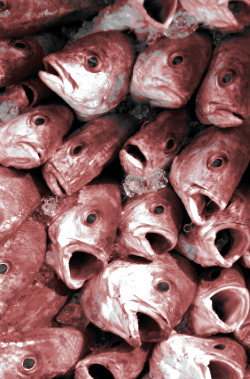Huge fish loss detailed
 One in three fish caught worldwide never make it to a plate, according to new UN stats.
One in three fish caught worldwide never make it to a plate, according to new UN stats.
The UN Food and Agriculture Organization’s biannual fisheries report finds that over a third of all fish are either thrown back overboard or rot before they are eaten.
About a quarter of the losses come from bycatch or discards, where trawlers and fishing boats throw back under-sized or unwanted fish dead.
Most of the losses come down to a lack of knowledge or equipment like refrigeration or ice-makers required to keep fish fresh.
Total fish production is at a record high, driven by fish farming particularly in China. Over half the fish eaten in the world now comes from aquaculture.
The amount of wild caught fish is at about the same level as it was in the 1980s, but still a third of commercial fish species are overfished, the FAO says.
The report predicts that almost 20 per cent more fish will be eaten by 2030, and raises concern about the harm that farmed fish can do to wild populations.
Farmed fish are fed with wild fish such as sardines and anchovies, which both reduces wild numbers and causes pollution.
Fish are central to the diets of billions worldwide, but overfishing has led to about two-thirds of species being overexploited in the Mediterranean and Black Seas and the Southeast Pacific.
Half the world’s oceans are now industrially fished.
“Since 1961 the annual global growth in fish consumption has been twice as high as population growth, demonstrating that the fisheries sector is crucial in meeting the FAO’s goal of a world without hunger and malnutrition,” said José Graziano da Silva, FAO director general.
He said recent initiatives to crack down on illegal fishing could bring about “a turning point” in favour of long-term conservation.
The FAO is working with developing nations to cut losses. In one case, they helped set up raised racks for fish drying, which resulted in a 50 per cent cut in losses of fish from Lake Tanganyika in Africa.
In the Indian Ocean, improved crab harvest facilities have cut losses by 40 per cent.







 Print
Print